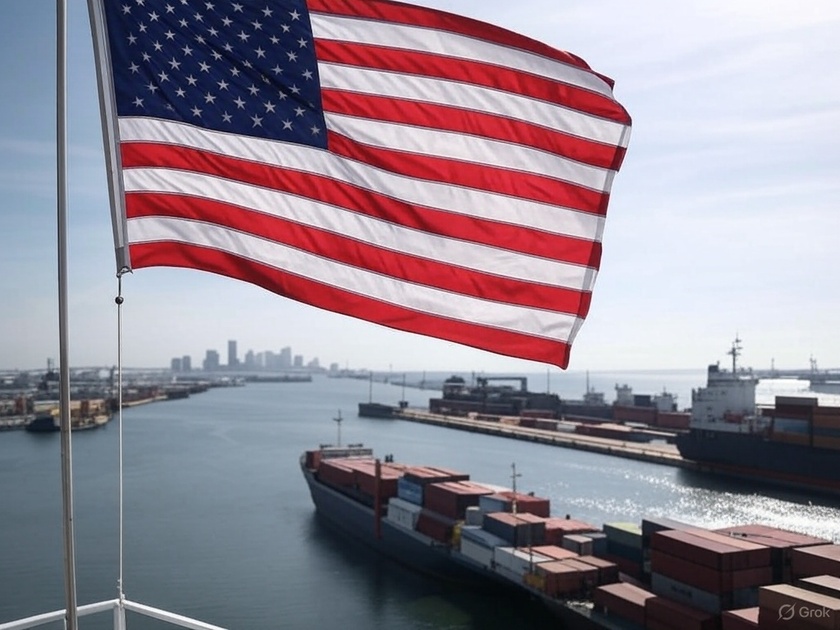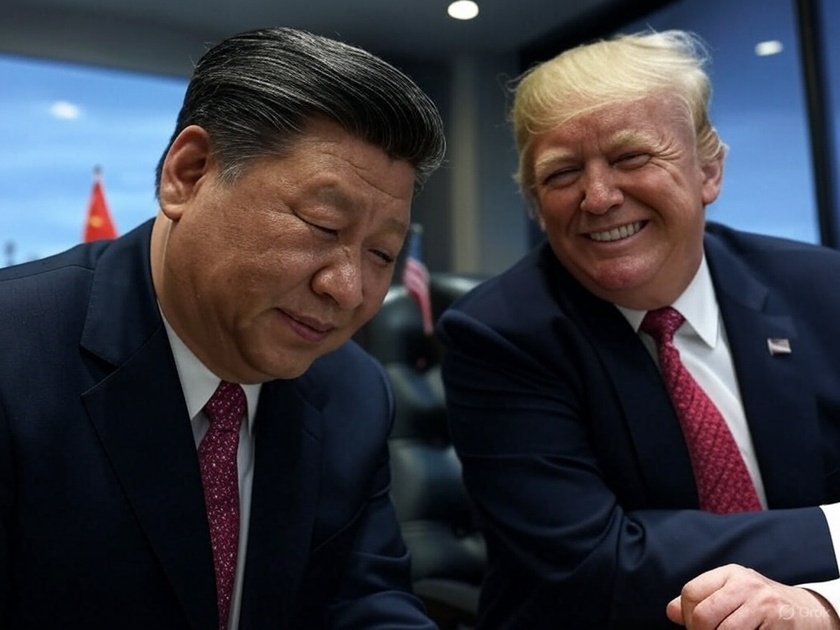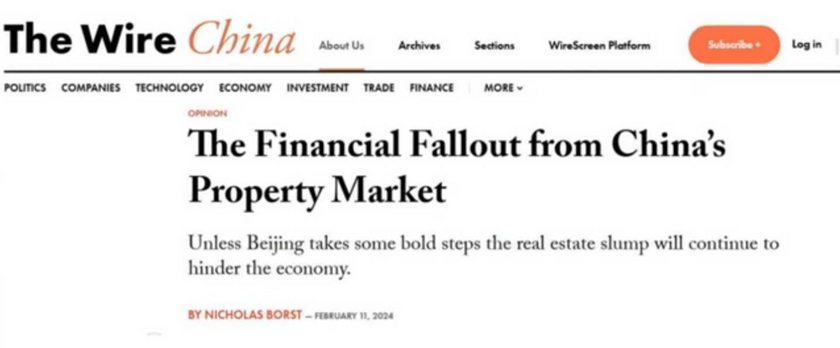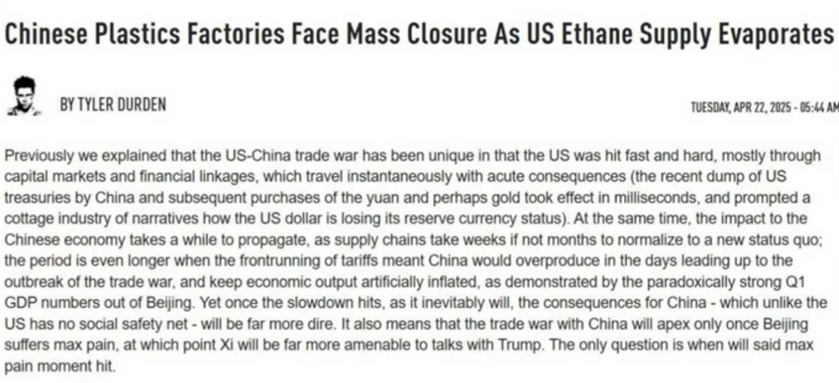To start off...
In recent weeks, something big has been happening behind closed doors. China, once seen as a rising economic superpower, is quietly backing down in the trade war with the United States. While the Chinese Communist Party won’t admit it publicly, the signs are everywhere, tariffs are being dropped, American goods are being let in tariff-free, and secret early-morning meetings are being held with U.S. officials.
So what’s going on? Why is China caving? To understand it, we have to walk through China’s economic problems, the power of U.S. tariffs, and how President Trump has flipped the global economic system on its head.
1. The Trade War Begins – And Why It’s Not Equal
President Trump announced reciprocal tariffs in April 2025. 57 countries were hit, but China was the real target. The U.S. started with a 34% tariff on Chinese goods, which quickly rose to 145% across all sectors as China retaliated. But here’s the kicker: China sells five times more to the U.S. than we sell to them.
That makes China far more vulnerable. We’re the deficit country, meaning we import more, so China has more to lose. The math is simple: if tariffs stay, China loses up to 10 million jobs. Even if reduced, it could still lose 5 million jobs. That’s devastating.
2. China’s Debt Problem and the Evergrande Collapse
China isn’t just dealing with tariffs. It’s drowning in debt, especially from the real estate sector.
Evergrande, once the world’s biggest real estate developer, defaulted in 2021.
It owed billions, and when it crashed, it dragged down the entire property market.
Home prices have dropped 30% since 2021.
This caused local governments to lose money, developers to collapse, and banks to panic.
China’s economy has been weakened from the inside, and they can’t afford more pressure from the outside. The trade war is hitting them at their worst moment.
3. Raw Materials Dependence – The Ethane Example
China wants to be independent, but it still relies on U.S. raw materials.
Take ethane, a gas used in plastics. Chinese factories can’t make their own. Because of Trump’s tariffs, China slapped a 125% retaliatory tariff on U.S. ethane. But guess what happened?
Their plastics industry started to collapse. Without ethane, the factories shut down. Plastics are used in nearly everything from electronics to packaging. That shut down ripple effects across the economy.
So what did China do? They quietly removed the 125% tariff on U.S. ethane.
And that’s just the beginning.
4. Secret Tariff Removals Across Multiple Sectors
According to Reuters and Gatestone, China is dropping tariffs on:
- Aviation parts
- Industrial chemicals
- Pharmaceuticals
- Semiconductors
- Medical devices
Some American companies in China are even reporting that they are now importing tariff-free.
It’s not public. It’s quiet. But it’s real. China is folding and fast.
5. Xi Jinping Can’t Admit It Publicly
Xi Jinping and the Communist Party can’t look weak. Saving face is crucial in Chinese politics. That’s why all of this is happening in the shadows.
On April 24, 12 Chinese officials, including someone from their Finance Ministry, entered the U.S. Treasury building at 7 AM (before cameras could catch them).
Chinese security tried to block photos. But reports got out anyway.
These quiet talks are proof: China is coming to the table.
6. The Bigger Picture: Trump Is Rewriting the Global Economy
For decades, China grew rich inside the globalist trade system. Organizations like the WTO, IMF, and World Bank. They joined the WTO in 1971 and exploded economically.
But they never became “liberal” like the West hoped. Instead, they used the system to grow their own power.
Now, Trump is tearing that system down. He’s replacing it with economic nationalism where trade deals are bilateral (one-on-one) and based on America First.
This is called mercantilism, where trade is used for national security, not global cooperation.
Under this new system, if China wants to keep selling to America, it has to play by Trump’s rules.
7. Why China Can’t Win This War
Even though China is a major power (the second largest economy in the world), it’s still too dependent on exports, too burdened by debt, and too weak internally to fight a prolonged trade war.
Their economic growth is expected to drop by 2.4% due to these tariffs.
The globalist system they depended on is collapsing.
Trump’s America controls the playing field now.
So they’re doing the only thing they can: quietly giving in.
In the end...
China may act tough in public, but behind the scenes, they’re admitting reality. The trade war is hurting them more than us. Tariffs are being dropped, industries are being saved, and secret meetings are happening.
Trump’s strategy worked because it was based on leverage, facts, and free-market power not on globalist fantasies or Marxist-style central planning.
The world economy is changing fast. And like it or not, America is back in charge.


















